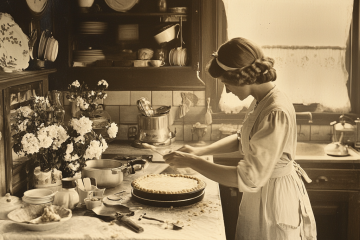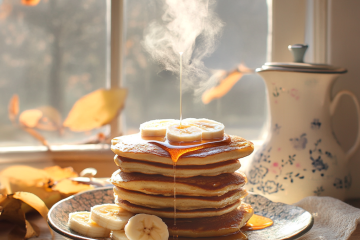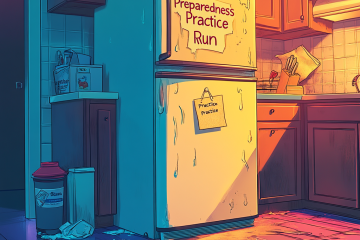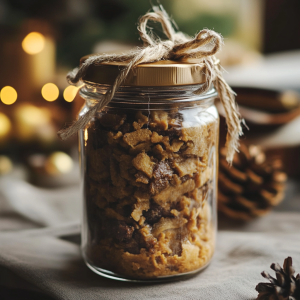
Homemade dog food formulas
Two years ago I started making my own pet food and I’m now totally addicted to doing so. Why? Well, to be self-reliant, of course, but here are my top 4 reasons that I suspect you might like as well–assuming you have a four-legged friend that’s a member of your family.
 Reason #1: I Never Want to Find Myself Without “Pet Food: I love, love, loves my “girls”. We’ve got 4 small canines and 1 feline with an overinflated ego and who thinks she’s also a dog. (She was nursed by a dog, so I guess I can appreciate that.) One morning my former husband went to feed “the girls” and discovered that we had no more “pet food”. (Understand folks that he’s not a friend to the kitchen, so it was completely
Reason #1: I Never Want to Find Myself Without “Pet Food: I love, love, loves my “girls”. We’ve got 4 small canines and 1 feline with an overinflated ego and who thinks she’s also a dog. (She was nursed by a dog, so I guess I can appreciate that.) One morning my former husband went to feed “the girls” and discovered that we had no more “pet food”. (Understand folks that he’s not a friend to the kitchen, so it was completely

Homemade dog food formulas
beyond his scope of possibilities to think that the tens of thousands of pounds of food that we have in the house would be more than suitable to feed the girls.) This experience really bothered him. He shared with me later that he never wanted to feel that way again, amidst a crisis or not.
Reason #2: Save Money—a LOT of Money: The day that I started studying how to make my own pet food was the  day that I spent $180 on 4 weeks of pet food! Good grief! That’s several times my monthly grocery budget, but I had gone through all of my “excess”. That weekend I chose to clean out my freezers. We have two that are deep and I had gotten bad about rotating my freezer foods. With couponing I’m always getting great deals on proteins like chicken and fish as well as vegetables. I suppose that it was as a result of my “bounty” that I found a lot of freezer-burned protein, vegetables, and other items that I had forgotten were in there. I was kind of overwhelmed with the amount of freezer-burned items I had because in my mind that meant that I had better come up with some creative meals to use these foods, and fast. I’ve frequently cooked freezer-burned food in my pressure canner and it turned out fine and dandy, but there was no way that I was going to come up with enough dishes fast enough that my husband and I could go through in a reasonable period of time. So, I decided it was time again to make a big batch of pet food! And so I did. I put the proteins in the pressure cookers to rehydrate them and make them soft and tender. They were perfect for my homemade pet foods.
day that I spent $180 on 4 weeks of pet food! Good grief! That’s several times my monthly grocery budget, but I had gone through all of my “excess”. That weekend I chose to clean out my freezers. We have two that are deep and I had gotten bad about rotating my freezer foods. With couponing I’m always getting great deals on proteins like chicken and fish as well as vegetables. I suppose that it was as a result of my “bounty” that I found a lot of freezer-burned protein, vegetables, and other items that I had forgotten were in there. I was kind of overwhelmed with the amount of freezer-burned items I had because in my mind that meant that I had better come up with some creative meals to use these foods, and fast. I’ve frequently cooked freezer-burned food in my pressure canner and it turned out fine and dandy, but there was no way that I was going to come up with enough dishes fast enough that my husband and I could go through in a reasonable period of time. So, I decided it was time again to make a big batch of pet food! And so I did. I put the proteins in the pressure cookers to rehydrate them and make them soft and tender. They were perfect for my homemade pet foods.
In addition to finding hidden treasures in the freezer, I’ve also discovered Hispanic and Asian markets. Their prices are significantly less that what I find at the regular grocery stores. I can’t believe it’s taken me 40 years to discover these stores! They have all kinds of great, cheap protein that I wouldn’t typically find at my regular grocery store but which my pets LOVE. For example, beef kidneys, I got for $1.29 per pound; there are 23 grams of protein per serving. All of the furried ones LOVED beef kidneys and it’s not too high in fats for either the dogs or the cat.
 My price point for protein that I’ll use in the pet food is $1.69 per pound max. The wet food that we purchase is between 85 and 1.10 cents an ounce. When I can get my protein at or below $1.29 per pound, I’m at only 10.5 cents an ounce worst case scenario. I also get the produce for my pet food concoctions on sale all the time, averaging 10 cents an ounce, and of course I use only the best quality grains which I get for a maximum of 15 cents an ounce.. (See percentages for dog food and cat food for these ingredients below) Bottom line, I’m averaging only 15% of regular pet food prices per ounce of dog food, and even less than that for cat food. And you can check with your local butcher to see if he’ll save you some of the less familiar cuts of meat to buy cheap that he normally wouldn’t be able to sell. There’s still lots of flavor in that bone marrow. No more $180 a month for me!!
My price point for protein that I’ll use in the pet food is $1.69 per pound max. The wet food that we purchase is between 85 and 1.10 cents an ounce. When I can get my protein at or below $1.29 per pound, I’m at only 10.5 cents an ounce worst case scenario. I also get the produce for my pet food concoctions on sale all the time, averaging 10 cents an ounce, and of course I use only the best quality grains which I get for a maximum of 15 cents an ounce.. (See percentages for dog food and cat food for these ingredients below) Bottom line, I’m averaging only 15% of regular pet food prices per ounce of dog food, and even less than that for cat food. And you can check with your local butcher to see if he’ll save you some of the less familiar cuts of meat to buy cheap that he normally wouldn’t be able to sell. There’s still lots of flavor in that bone marrow. No more $180 a month for me!!
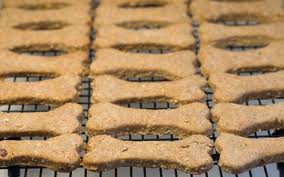 Reason #3: I Refuse to Feed them THAT!” For about 13 years I had the most beautiful feline with a phenomenal personality. Even people who hated cats loved her. If she was getting into something that she wasn’t supposed to, I’d scold her and she would always talk back with these little chirps. And the funny thing was she ALWAYS had to have the last word. I just loved that cat like you wouldn’t believe. Unfortunately though, she died of kidney failure as a result of the melamine contamination that hit our markets in 2007.
Reason #3: I Refuse to Feed them THAT!” For about 13 years I had the most beautiful feline with a phenomenal personality. Even people who hated cats loved her. If she was getting into something that she wasn’t supposed to, I’d scold her and she would always talk back with these little chirps. And the funny thing was she ALWAYS had to have the last word. I just loved that cat like you wouldn’t believe. Unfortunately though, she died of kidney failure as a result of the melamine contamination that hit our markets in 2007.
Putting her down was one of the hardest things I’ve EVER had to do. (I’m bawling now just writing about it, Ugh!) Anyway, that woke me up to the fact that, like everything else I eat or use, I simply can’t rely on “them” to make sure it’s safe and good for me. So I started doing more studying on what all of these terms mean on the pet food labels. Oh…my…goodness. I was horrified. I won’t get into all of that here, but suffice it to say “animal protein is certainly NOT the same kind of protein you and I think of. Additionally, “by-products” is a fluffy term for all of those hormones, pharmaceuticals, and decay that are found in pet food as a result of the road kill, euthanized animals, and dead animal carcasses that are put in your pet food. The majority of the pet food cans contain a BPA lining. (Go ahead, call the manufacturers. You’ll find out.)
A year ago I got a book called “Buyer Beware: The Crimes, Lies and Truth About Pet Food” by Susan Thixton. Once I started reading it, I had a hard time putting it down–because it was like watching a train wreck. I just couldn’t stop. That books is all highlighted and tabbed today as any of my other books that I deem to be quality reference books, but very few of my books have been that disturbing. I have to say, Susan didn’t hold anything back. I was horrified with what was deemed acceptable to put in my pet food. I am not interested in feeding my girls the maggots that are abundant in these carcasses. Oh, and you know about the cooking oil that is so nasty, it has to be perfumed regularly by the food industry?? Yeah, that makes its way to the pet food manufacturers as well. I’m even LESS likely to purchase pet food today after learning about the sources of the bubonic plague–squirrels, cats, and other animals throughout the U.S. Uh, no. I refuse to feed my girls The Plague. (google “plague found in cats, squirrels”).
Susan Thixton says it well when she makes clear that the pet food industry is the ONLY industry in the U.S. that’s allowed to LIE to consumer and VIOLATE Federal Food Safety Law. (And to think, some ding-bat “preppers” actually stock up on pet food as a part of their HUMAN food storage! I guess that’s part of the consequences for embracing the term “food storage” in the first place.) Let’s face it, I’m not too happy with how they lie to me about what’s in the food intended for humans as it is; and it doesn’t take a genius to begin to comprehend what the food manufacturers would do if they could get away with ANYTHING! And yet if a carcass is condemned for human consumption, the pet food industry sees it as easy profit to them. None of this is OK with me. Even if you’re purchasing food that’s advertised as “human grade” you should still be careful because the pet food industry gets away with lying so rampantly!
4: Homemade Pet Food is Easy to Make and Store: Remember, I’m the laziest preparedness person you’ll ever meet. So if I’m doing something, I can guaran-dang-tee-ya that it’s easy to do. And making quality homemade pet food is as easy as going through a salad bar. All I do is throw my raw veggies in the food processor to get them chopped up all nice and small and throw them in their own bowl. I get some legumes such as black beans or pinto beans and put them in their own bowl. For the proteins, I either chop them up raw if they are fresh, or I put them in my pressure cooker with some seasonings and water and pressure cook them until they are tender and shred easily. Each protein has it’s own pan. (Hint: I still use the chicken skin because it’s great flavor and a good source of fat for the animals, but I put it in the food processor to chop it up really small.)
While I’m processing the various ingredients for the pet food, I’m sanitizing pint and half pint canning jars and the appropriate lids. (You can freeze or refrigerate the food and feed it to them raw if you’d like, but I can mine so that I always have it on hand and don’t have to worry about it going bad.) I use the pints for the canines and the half-pints for the feline. It’s important that I can use up a jar of food as quickly as possible, and to do so before the feline gets appetite fatigue. (She doesn’t like eating the same thing over and over again, so I can’t do pints for her as it would be 4 or 5 days worth of wet food for her).
When everything is ready, I create what looks like a salad bar—but for pets. I take a large bowl and mix up a “dish” for the dogs using 10% grains, 60% protein with some fat, and 30% vegetables that are appropriate for dogs. (No grapes, garlic, onions, watermelon, etc.) I add just a little bit of salt, perhaps a little rosemary and then I mix it all up in the bowl. Remember, the veggies and legumes are UNCOOKED and some of the protein is too. (Only the protein which I had to rehydrate in the pressure cooker is cooked). I then fill the pint jar about 75% full and then top it off with water or broth, leaving about a ½ inch of head room. I do that until my bowl of mixture is empty and then I go on to create something else different in a new, clean bowl.
dogs using 10% grains, 60% protein with some fat, and 30% vegetables that are appropriate for dogs. (No grapes, garlic, onions, watermelon, etc.) I add just a little bit of salt, perhaps a little rosemary and then I mix it all up in the bowl. Remember, the veggies and legumes are UNCOOKED and some of the protein is too. (Only the protein which I had to rehydrate in the pressure cooker is cooked). I then fill the pint jar about 75% full and then top it off with water or broth, leaving about a ½ inch of head room. I do that until my bowl of mixture is empty and then I go on to create something else different in a new, clean bowl.
For the cat food, I use the same bowl method but this time using a ratio of 85%-90% protein with accompanied fat and the remaining 10% -15% with some vegetables or legumes to add some complimentary taste to the protein. I fill up the ½ pint jars about 90% and then top them off with broth, water, or gravy while leaving ½ inch of head room. I always add TAURINE in my cat food as they need that!
(Note, I feed my pets daily minerals designed specifically for them by Beam Minerals)
I process them in the pressure canner according to pressure canner instructions. (In my case of high altitude, 75 minutes at 15 pounds of pressure) When the pressure canning is all done the raw meat is cooked as are the uncooked legumes and vegetables.
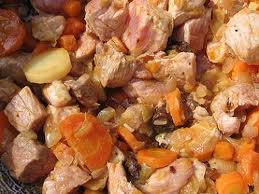 When the jars have cooled and sealed, I then take off the rings and wash them in warm soapy water and set them aside to completely dry. Then I carefully wash the outside of the jars with the warm soapy water because they will most likely have protein fat and juices on the outside of them from the moderate amount of leaking that happens when you pressure can. (Just like a pressure cooker does—think of each of your jars in your pressure canner like little pressure cookers.) They’ll stink if you leave them unwashed. Be sure not to put the rings back on the jars until the have completely dried or you’ll have rust develop (unless you’re using the Tattler lids). Also, be sure not to stack full canning jars on top of each other as the weight from the canning jars may cause your seals to break.
When the jars have cooled and sealed, I then take off the rings and wash them in warm soapy water and set them aside to completely dry. Then I carefully wash the outside of the jars with the warm soapy water because they will most likely have protein fat and juices on the outside of them from the moderate amount of leaking that happens when you pressure can. (Just like a pressure cooker does—think of each of your jars in your pressure canner like little pressure cookers.) They’ll stink if you leave them unwashed. Be sure not to put the rings back on the jars until the have completely dried or you’ll have rust develop (unless you’re using the Tattler lids). Also, be sure not to stack full canning jars on top of each other as the weight from the canning jars may cause your seals to break.
 As you can see, I don’t use recipes really. I just focus on the proper ratios for the animals. That’s another thing to mention too. Most pet foods today have way too much grain/starch and way too little real protein. So this formula is a lot healthier for your pets and for some reason when they eat this yummy, homemade stuff, they don’t stink; they don’t throw up; and their bowel activity is much easier for them.
As you can see, I don’t use recipes really. I just focus on the proper ratios for the animals. That’s another thing to mention too. Most pet foods today have way too much grain/starch and way too little real protein. So this formula is a lot healthier for your pets and for some reason when they eat this yummy, homemade stuff, they don’t stink; they don’t throw up; and their bowel activity is much easier for them.
The one other thing that I consider a MUST is that each day they get a pinch of food-grade diatomaceous earth (aka DE) in their food. I do this so that I can be certain that they are getting the proper vitamins and minerals. I double-dog dare you to feed your pet your homemade food for a week and then go back to the “other stuff”. Boy howdy, will you notice a difference in their behavior, their “stinkers”, and their smell, etc. (Really, it’s THAT big of a difference, so for the love of your pets, don’t take me up on my dare and put them through that misery just to prove a point. *grin*) Food-grade diatomaceous earth is a natural dewormer.
So yeah…I make my own pet foods—wet or dry—and I do it because I can and because I sure do love my girls!
Quality Ingredients for Dog Food
(If it’s not on this list, you’re better off NOT using it)
Fat: Yogurt, Chicken Skin, Duck Skin, Turkey Skin, broth, Cod Liver Oil, Fish Oil, Cheddar Cheese, Sunflower Seeds, Olive Oil, Butter, Whole Milk (in moderation), Bacon (in moderation), Mozzarella Cheese, Peanut Oil, Almond Oil.
Protein: Eggs*, Turkey, Chicken, Duck, Beef, Chicken Liver (in moderation), Chicken Hearts, Chicken Necks, Beef Kidney, Almond Nut Butter, Yellow Fin Tuna, Shrimp, Pink Salmon, Sunflower Seeds, Oysters, Sardines, Ham (in moderation), Peanut Butter, Bison, Venison. (ALL seafood should be cooked when fed to dogs!)
Legumes**: Black beans, Pinto Beans, Edamame, Red Beans, Kidney Beans
Vegetables: Broccoli, Cauliflower, Spinach, Sweet Potato, Green Beans, Water Chestnuts, Yellow Squash, Acorn Squash, Bok Choy, Alfalfa Sprouts***, Cabbage, Zucchini, Asparagus, Cucumbers.
Fruit: Apple, Pear, Red tomato, Banana, Blueberry, Strawberry, Raspberry, Pumpkin, Peach, Cranberry, Mango, Pineapple, Apricot.
Grains/Starch: Egg shells, Brown Rice, whole wheat pasta, Peas, Carrots, Barley, Oats, Millet, Potato, Flax Seed (finely processed).
Seasoning: RealSalt (not iodized), Rosemary, Celery, Red/Green Pepper, Parsley, Tomato Juice, Apple Juice, Cinnamon, Oregano, Thyme.
Quality Ingredients for Cat Food
Fat: Yogurt, Cod Liver Oil, Fish Oil, Sunflower Seeds, Cheddar Cheese, Mozzarella Cheese, Whole Milk (raw preferred), Whipping Cream, Half and Half, Olive Oil, Butter, Broth, Flax Seed Oil.
Protein****: Sardines, Salmon, White Fish, Tuna, Shrimp, Crab, Lobster, Chicken, Chicken Hearts, Beef Kidney, Duck, Beef, Sunflower Seeds, Clams, Mackerel, Kingfish, Eggs, Canned Oysters, Turkey, Canned Clams, Anchovies, Rabbit. (I suggest cooking the protein for cat food to avoid food poisoning and contaminants)
Legumes*: Black Beans, Pinto Beans, Red Beans.
Vegetables: Canned Pumpkin, Broccoli, Cauliflower, Water Chestnuts, Spinach, Acorn Squash, Zucchini.
Fruit: Red Tomato (canned, fresh, and diced or paste), Applesauce, Canned Pumpkin, Honeydew Melon, Strawberry.
Grains/Starch: Brown Rice, Millet, Oats, Carrots, Peas, Flax Seed (finely processed).
Seasoning: RealSalt, Parsley, Catnip, Oregano, Cinnamon.
*Egg shells finely crushed are a good source of calcium
**Do not allow the legumes to completely replace the protein needs
***Approved vegetables that will sprout are acceptable i.e. broccoli
**** If you puree well in the processor the bones in the fish will satisfy calcium needs; Preparing fish in the pressure cooker or via pressure canning will liquefy small bones. Also be sure that you remove the fish skin or puree it very fine.
NO onions, garlic, raisins, grapes, corn of ANY kind, soy, canola oil, yeast breads, seeded watermelon, chocolate, mushrooms, macadamia nuts, citrus fruits, pits from fruit, coffee, persimmons, rhubarb, avocado, bran, and be sure to not give them too much of any of the fruits and vegetables with high sugar contents. The stems and leaves of tomatoes and potatoes are also toxic.
Both of my bestselling books, “Neanderthals in the Kitchen”, and “The Magnificent Pantry” cookbook have recipes for dog and cat food in them because I couldn’t forget my furry family members!
Join us on Facebook facebook.com/preparednesspro!
